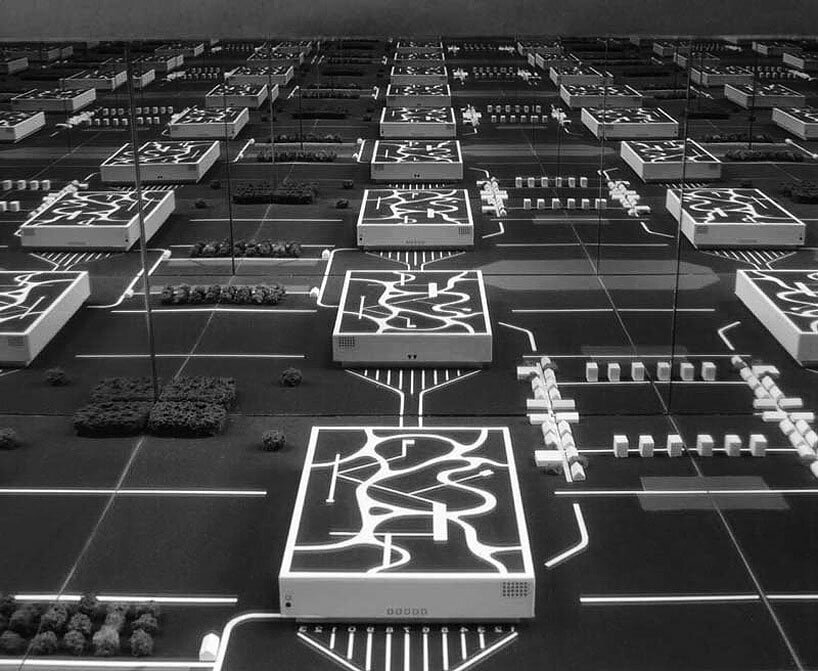Andrea Branzi passes away at 84
Andrea Branzi, an Italian architect, designer, and educator known for his significant contributions to the fields of architecture, industrial design, and urban planning, has died at the age of 84. Stefano Boeri bids farewell to the designer with a heartfelt Instagram post.
‘Andrea Branzi has left us. He was a giant of radical thought on human spaces, a sophisticated historian of italian design, a visionary artist capable of inhabiting other universes and parallel worlds with irony. He leaves us a powerful and generative legacy of works and texts; and a film produced a year ago by Triennale which is his intellectual testament. He left us thinking and dreaming. A few hours ago, we spoke with him and Nicoletta and Emanuele Coccia to resume the project of a ‘Great Paris’ crossed by 50 thousand large sacred cows -so that they could ‘reduce metropolitan stress’. Ciao Andrea, keep dreaming about us.
image © designboom
Andrea Branzi’s Architectural and Design Journey
Andrea Branzi began his architectural journey at the Florence School of Architecture, where he earned his degree in 1966. During the 1960s and early 1970s, Branzi founded Archizoom Associati together with Gilberto Corretti, Paolo Deganello, and Massimo Morozzi, an experimental design group known for its groundbreaking projects, including the visionary No-Stop-City, an unbuilt project presenting an urban utopia where the architectural form disappears and only the essential remains.
‘A project that was of great importance for me, but also for my generation, for many artists that came afterwards was the No-Stop-City project,’ Branzi told designboom in 2003. ‘A fluid metropolis, where even the concept of modernity within order changes towards an idea of uncontrollable complexity and a world destined to a huge diversification. Today I see that this type of scenario is appreciated, shared by famous contemporary architects who recognize the radical movement and the No-Stop City project to be a genetic event, which intercepted a development in the culture of the project, becoming an example within the project itself.’

No-Stop City (1970) by Archizoom Associati
Some of Andrea Branzi’s notable furniture designs include the Superonda sofa (1966), the Mies chair (1968), and the modular Safari sofa (1968). These pieces were created with the intention of challenging conventional notions of how we use and interact with furniture. Later, he played a significant role in Studio Alchimia, founded in 1976, and collaborated with the Memphis Group in the early 1980s. In the mid-1980s, Branzi shifted his design approach away from the highly stylized aesthetics of postmodernism and embraced what he termed ‘neoprimitivism,’ blending elements of nature and artificiality.
The pieces featured raw sections of trees integrated into sleek and minimalist tables, chairs, and benches, all characterized by a grayscale color palette. Branzi’s impact extends beyond his design work. He co-founded Domus Academy, the first international post-graduate design school, and served as a professor and chairman of the School of Interior Design at the Politecnico di Milano until 2009. 
Domestic Animals bench (1985) by Andrea & Nicoletta Branzi | image courtesy of Wright
In more recent years, Branzi’s designs have evolved into personal objects with a fragmented composition and subtle Yiddish irony. These designs reflect his ongoing exploration of innovative concepts and aesthetics in the world of furniture and object design. Branzi has received several awards throughout his career, including three Compasso d’Oro, honored for individual or group effort in 1979, 1987, and 1995. Additionally, he received the title of Honorary Royal Designer in the United Kingdom in 2008 and an honorary degree from La Sapienza in Rome.
His work was also featured in an installation at the Fondation Cartier in Paris in the same year. In 2018, Branzi received the prestigious Rolf Schock Prize in Visual Arts from the Swedish Royal Academy of Fine Arts. Andrea Branzi’s design legacy endures, with his works held in the permanent collections of esteemed institutions like the Centre Pompidou in Paris, the Israel Museum in Jerusalem, the Museum of Fine Arts in Houston, Texas, the Museum of Modern Art in New York, and the Victoria & Albert Museum in London, among others.
Safari sofa (1967) by Archizoom Associati | image courtesy of Poltronova
